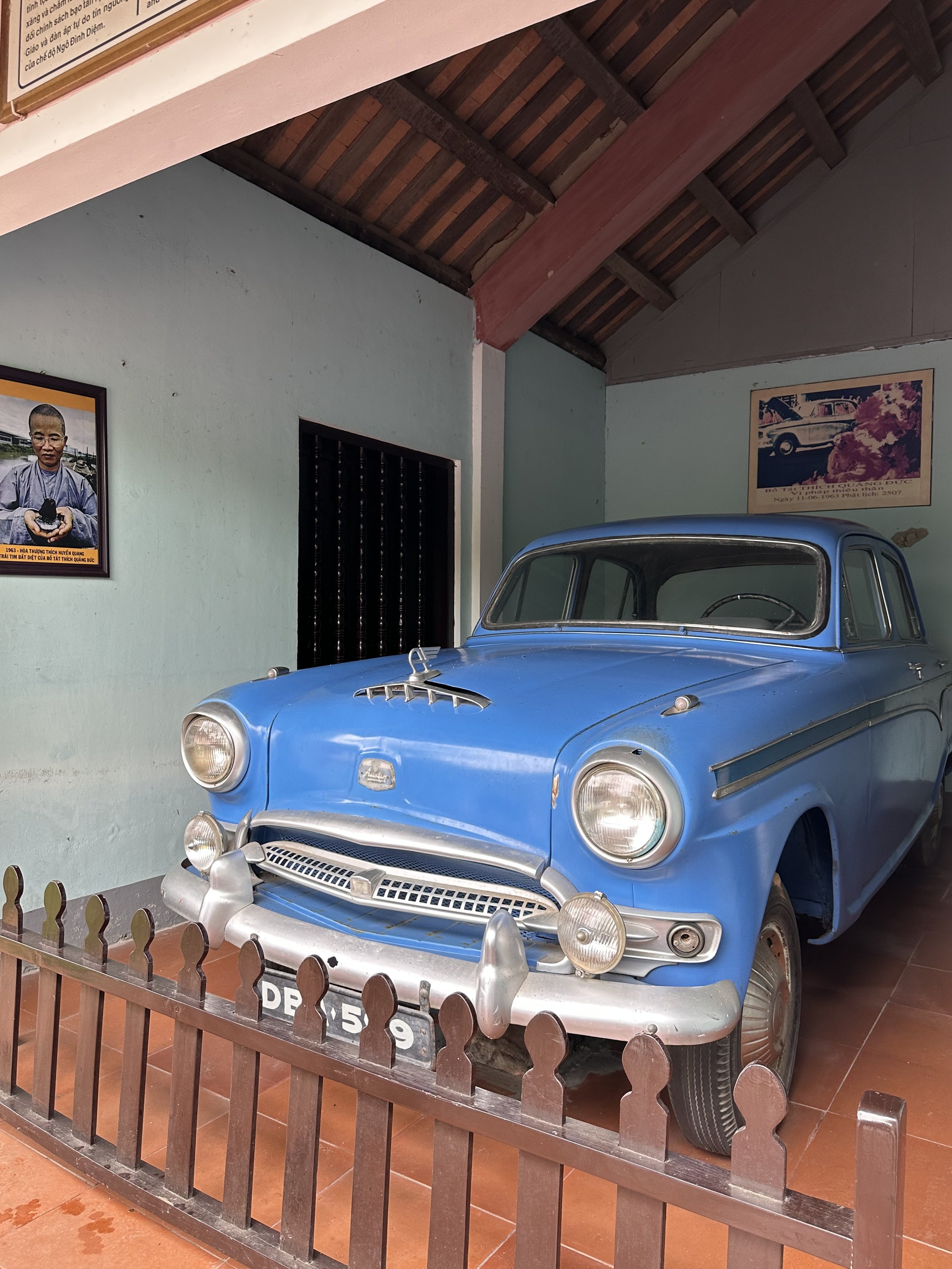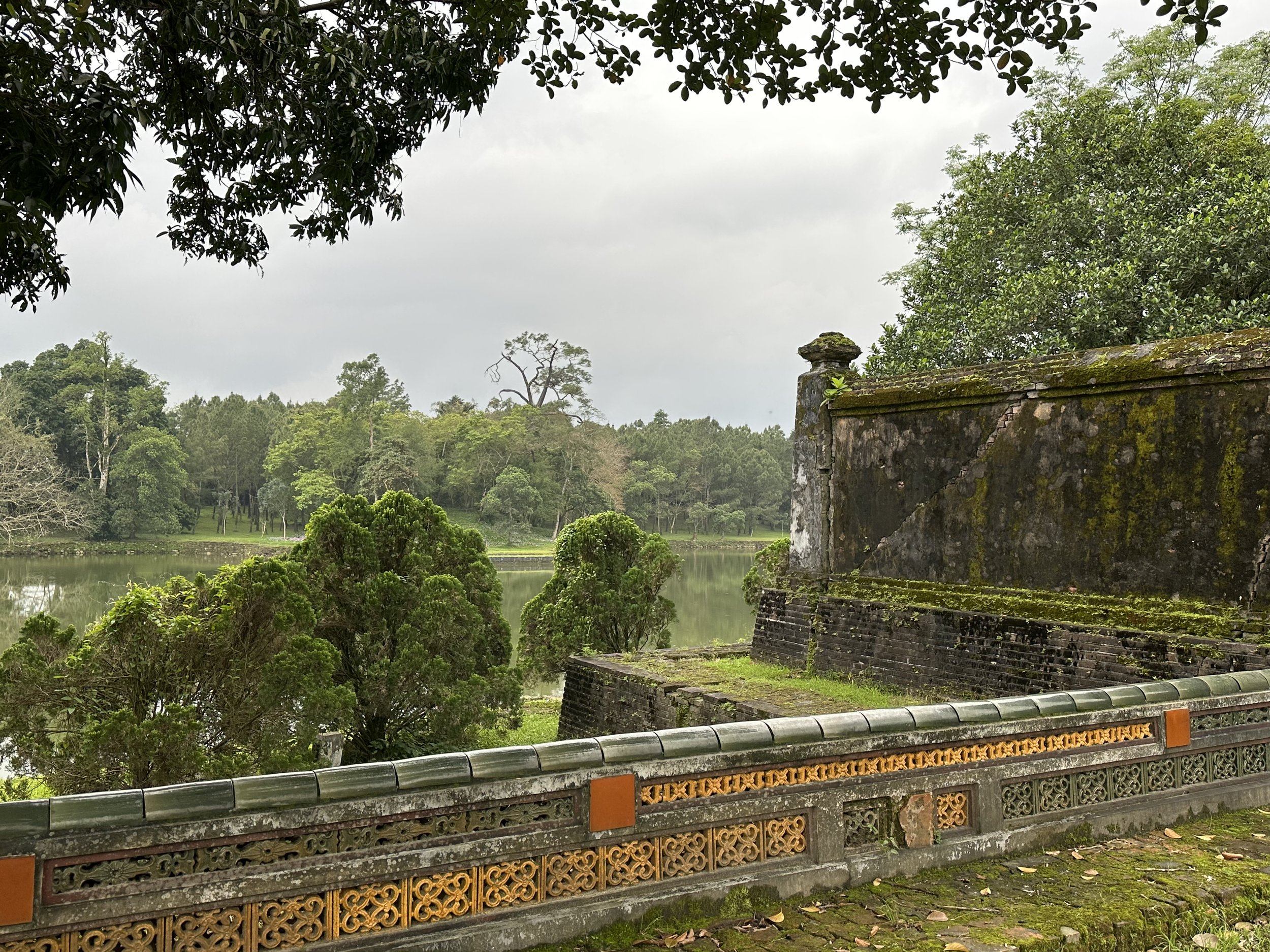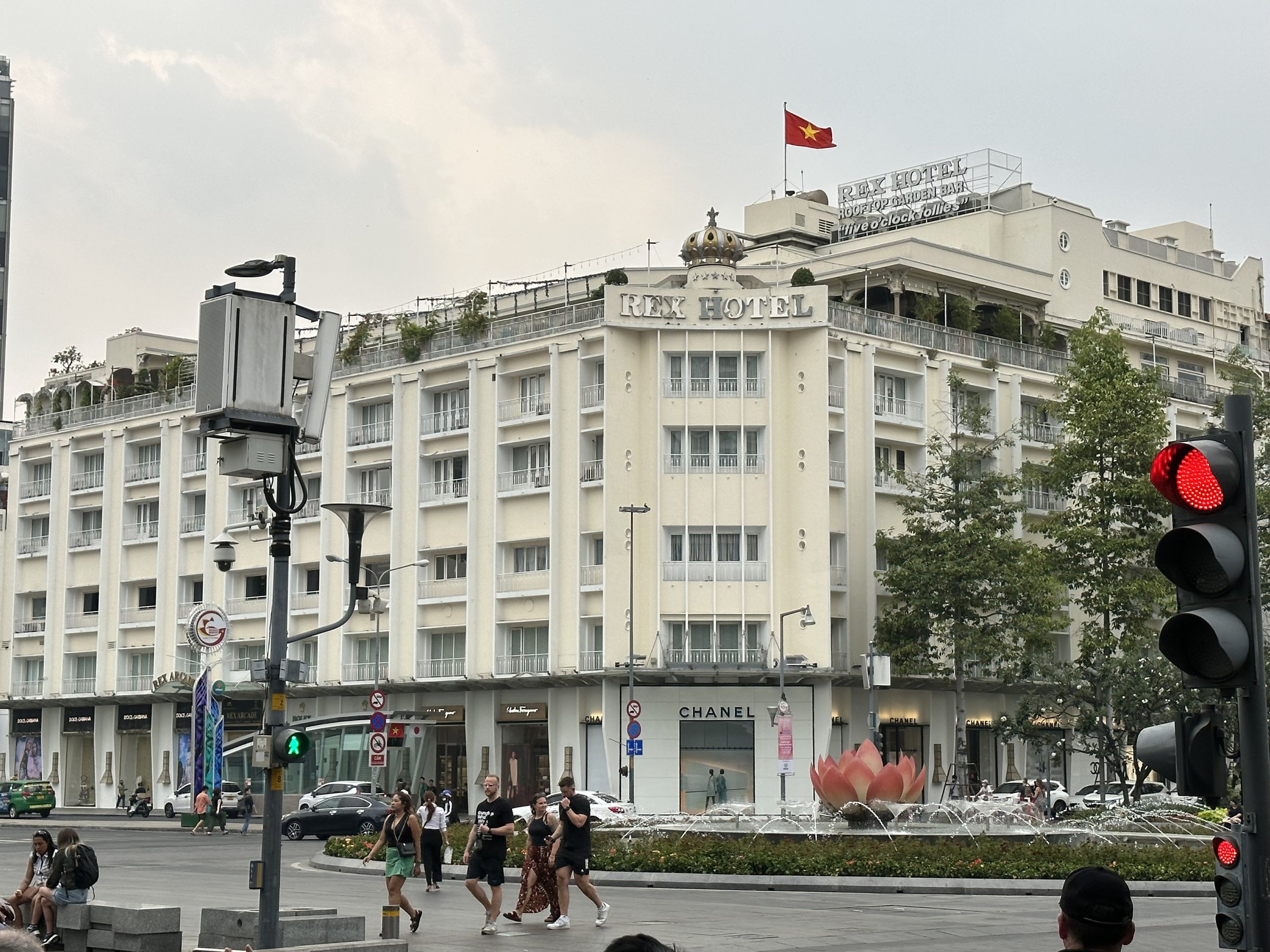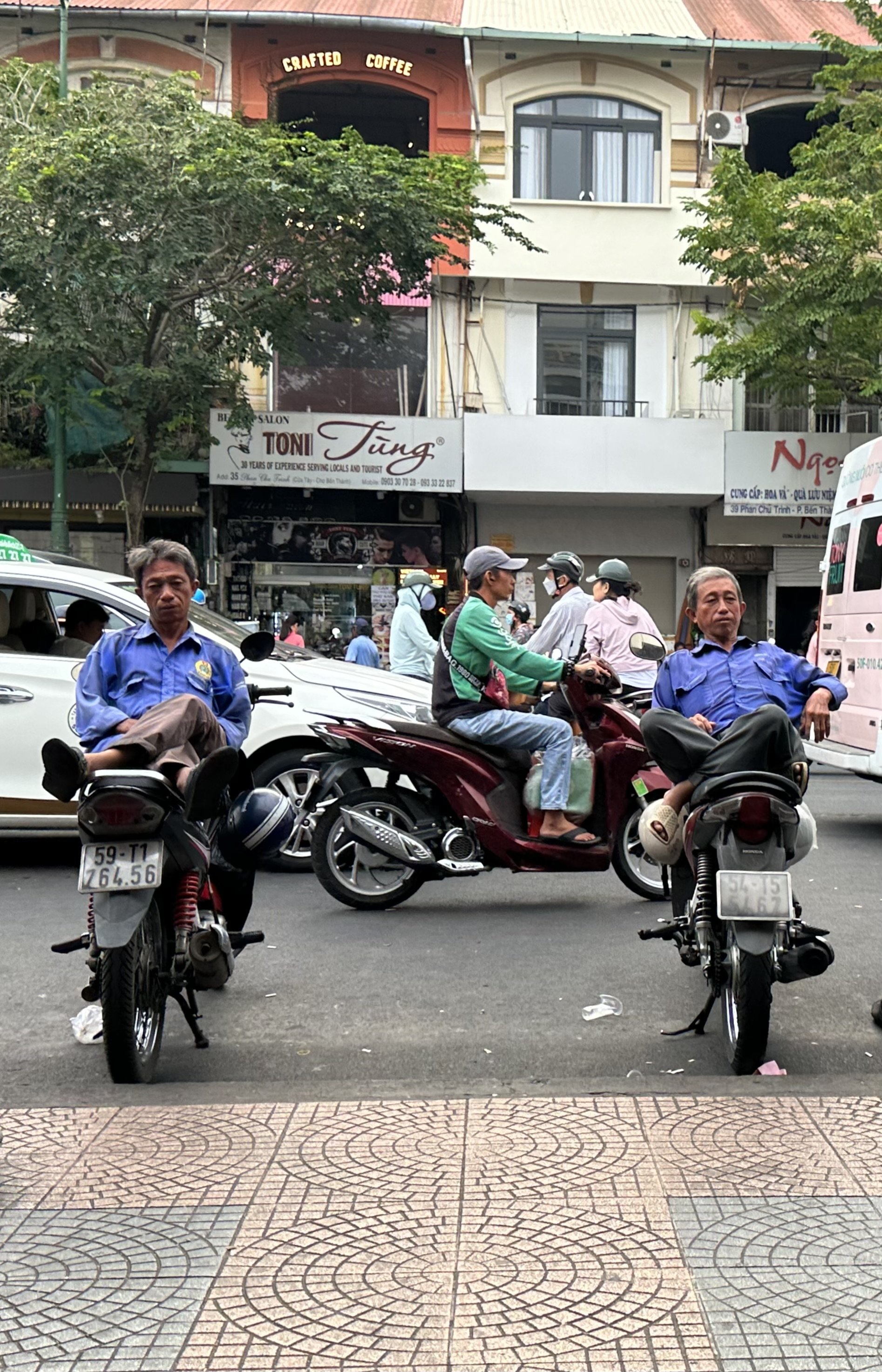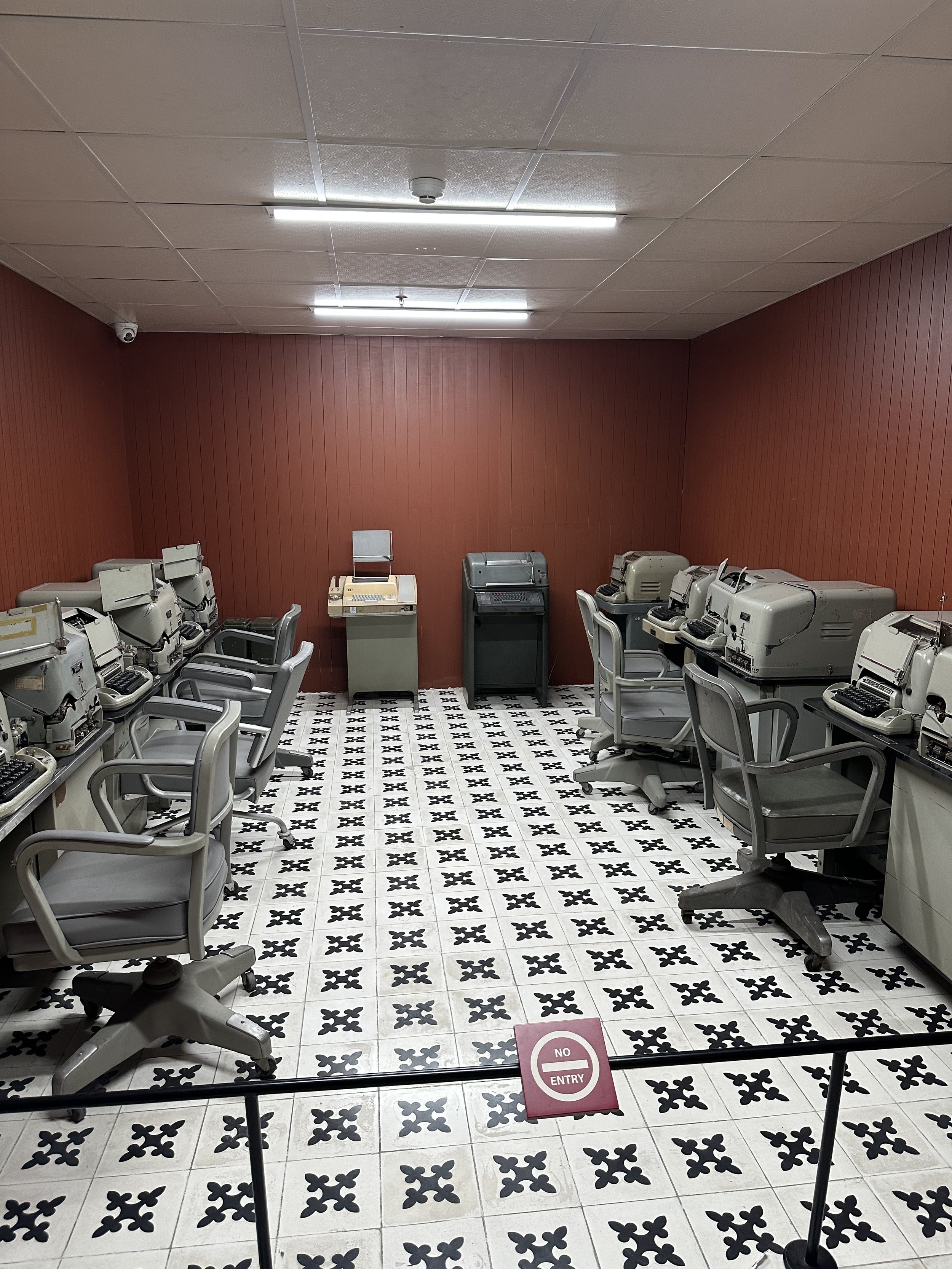Vietnam, February 26 2023
When I was twelve, I think I knew more about the geography of Vietnam than I did my home state of Illinois. Every night came the news. The maps, arrows, locations of battles all captured my attention. The body counts, the video clips that I can still see if I close my eyes, burning monks, napalmed civilians, and the infamous shocking, pistol to the temple street execution. We debated the war in grade school and there we split the argument, just like the rest of the country. I wasn’t sure who to listen to. Back then newscasters kept their opinions mostly to themselves. I didn’t like Jane Fonda much (I hadn’t see Barbarella yet), and then there was John Wayne doing his best to show the war as WW2 all over again. I guess for the most part I saw the war as America doing more of what made us a great power, and it wasn’t until probably John Lennon’s influence that I came to think otherwise. Gradually the mistake became very obvious to me.
The same car Quang Durc drove to Saigon to set himself on fire
I still remember sitting on the living room floor and watching the lottery on TV with my brother Vic. It was all winding down then, thank God, and we weren’t as scared of the draw as we might have been. We would miss out on the free trip to SE Asia.
Point is, it all made quite an impression at an impressionable age, and I’ve always wanted to visit the far off scene of the crime. For me there was really no better way to do that than by cruise ship. That’s because Vietnam still has some really bad infrastructure. A train from Hanoi to Ho Chi Minh City is painfully slow. The traffic is just an all day jam and a bee hive of all types of vehicles, prominently motor bikes which seem to be swarming everywhere. Yes, a cruise made sense and booking a year in advance on the heels of covid got us a great price on a luxury line, Silversea. The ship would sail for nine days from Hong Kong to Singapore making three stops in Vietnam.
Hong Kong
Bamboo scaffolding, strong stuff
Hong Kong didn’t disappoint, it’s impressive. We had some good dinners, took the famous ferry ride, rode the tram up to “The Peak” and appreciated some great views. Taking some long walks I saw a city that looked tranquil and busy, with no signs of discontent or protest. Maybe they were wearing down, or maybe the media made more of it than it was.
Hong Kong skyline from '“The Peak”
Dinner Hong Kong
Embarking and disembarking on Silversea was pretty easy compared to other cruises, the ship is not that big. In total we carried less than 400 passengers and everything about the cruise was truly first class. The service didn’t miss and the food was more varied and overall better than on any cruise I ever experienced. This ship is more about food and drinks and less about entertainment. Although the shows they did put on were quite good and the handful of singers they brought along provided for some nice evenings either in the theater or spread into the various clubs and bars around the ship.
Our ship, the Silver Spirit preparing to depart
Ha Long Bay at sunrise
After a day at sea, our first stop was Ha Long Bay, we arrived at sunrise and not by coincidence. The islets that decorate the bay, nearly two thousand of them, are like limestone sculptures that look surreal in the morning sunlight. We must have spent over an hour passing through the tiny islands before we docked. Our first excursion was a harbor cruise on a junk boat which made one stop at a limestone cave on one of the bigger islands. There were signs noting that plastic containers were strictly prohibited, as the government is making what appears to be a difficult and late effort to stem water pollution. I wish them luck. Like most mainland Asian coastal cities the water and air quality is tragic.
Later, I headed into town with a few new friends from California to check out what turned out to be a very pretty town center and a sprawling outdoor market. It all was fascinating and tourist free, and as diverse and expansive a market as I’ve seen. There I had my first Vietnamese coffee. Made with condensed milk and served over ice it was sweet, refreshing and although it won’t replace my morning cappuccino, I really enjoyed it.
Vietnamese coffee
Utilities are a bit complicated in Vietnam
Back to sea, our next stop was Da Nang. We actually docked just up the coast and from there and took a bus for a tour of the city of Hue. Both these names, Da Nang and Hue, were large in my memory. In Hue we toured the historic center, the Imperial City. Hue was the site of one the war’s major battles. During the Tet Offensive several Viet Cong divisions quickly overran the under strength South Vietnamese garrison there. US marines would take it back, house by house (you may recall the scenes from Full Metal Jacket) and finally re-hoist a flag on the same pole that stands above the fortress grounds we toured. It was a bloody fight. It ended as another American tactical victory and yet a strategic disaster. The battle did a lot to demoralize the American public’s faith that the war might ever end in victory. As we toured, bullet holes and shell damaged walls still display the evidence.
Imperial City in Hue
Our final port of call in Vietnam was a two day stop at Ho Chi Minh City, Saigon to us Americans. We arrived mid day and that same afternoon took in a bus tour of the city. It was as congested and overrun with motorbikes as you would imagine. A busy town that is a mix of colonial architecture, historic buildings and a good deal of new construction. The tour included visiting a large indoor market that sold everything from Rolex watches to soup. The many street food stands looked appetizing but I decided to play it safe.
The old post office in Ho Chi Minh City
Inside the post office, the man is everywhere
Rex Hotel, home to the rooftop “Five O’clock Follies” press conferences during the war
Weasel coffee? Not an urban legend, beans digested by civits before being roasted
Touring the city further, we made a stop at the Reunification Palace. This large building was constructed in the 1960’s and served as the seat of government for South Vietnam. Rooms here hosted visits and conferences with American dignitaries like Henry Kissinger. Underneath the building were bunkers used during the war for communications and war rooms. When Saigon fell, tanks pushed through the front gate capturing the building, and those same tanks stand on display to greet the tourists as they arrive.
Reunification Palace
One of the tanks that “liberated” Saigon
While Candy took in a street food tour, I headed for the Chu Chi tunnels just northwest of the city. This was an elaborate system of underground works spanning 75 miles and built over several decades and wars. The clay soil is like hard rock, making the tunnel’s construction a monumental effort and its destruction nearly impossible. Although they were damaged extensively by modern US weapons in repeated efforts, they were a constant open wound along the battle front. The vast area was covered with booby traps, ambush holes, and a network that allowed sheltered movement throughout the area and right under American troops. Touring the works it became clear to me just what kind of adversary we were dealing with during the war, and why we couldn’t win it the way we chose to fight it. Everywhere on the tour was the evidence that the Vietnamese soldiers were utterly dedicated to their effort, no hardship, lack of food, lack of materials, no amount of pain could deter them. As long as they could breathe, they were working to kill one more American soldier. At Chu Chi you get the sense of how insane it all was. It seems so impossible in today’s American society that you could randomly pluck young American boys from their homes, cancel their plans and dreams while shoving them into this cruel environment, and for what? Nothing less than a war crime against our own youth.
A fellow tourist seeing if he can fit into the tunnel entrance
A booby trap, that’s not the original astroturf
An unmodified tunnel I tried out. It’s incredibly narrow
A US tank, left where it died
There were many displays and demonstrations of booby traps
This tunnel was a 100 meter section widened for passage, and still a challenge to get through
Then after this sad tour, the next day we visited the Saigon war museum. Exhibits show a decent display of American equipment but the museum is mostly photographs of war atrocities (just the American ones) and paints a clearly one sided portrait of the war. Now I’m quick to criticize the US historical record, and I have no illusions of our mistakes and long history of killing innocents while waging unnecessary wars. I don’t see us as much different from any other country that waged a bloody war. They are all bad, and every nation that participated is to various degrees a guilty party. However seeing this museum left me angry and disappointed, especially in depictions of the US home front. They took a lot of space to show how the world supported them with anti war protests and demonstrations, but grossly understated those same sorts of efforts on the campuses and the streets of America. In an entire museum floor of such displays, the portion that showed our resistance was maybe eight feet wide. Maybe it’s like a family thing. I don’t have any problem being critical of the US, but when someone from another country does it, I just want to fight them then and there. I’m glad the museum came on my last day in Vietnam.
Outside the war museum
A whole floor on the subject
The little piece to acknowledge our anti-war efforts
Back to Saigon, the city is expansive and rapidly growing. I think overall the country is following the same path as China to economic prosperity and will be a force in the coming decades. I was left with an impression that the population here is focused on work, on education and improving the lives of their future generations. I wish them luck and hope they will continue to move toward ties with the West and away from China. We might have a leg up actually, the war with the US lasted a decade, yet their conflicts with China have spanned centuries. There is no love lost between them.
The Hyatt Bali
The ship ended the cruise in Singapore, a city I had heard so much about. On arrival it was off to the airport to spend a couple days in Bali. A short visit as we were relatively close and wanted to get a sense of what all the bucket list fuss is about. We didn’t stay far from the airport but it was still a 20 minute cab ride through the island traffic.
Hyatt’s private beach
Sunrise on the Bali beach
We stayed at the Hyatt Bali on the eastern shore. A large beautiful resort with an expansive pool and a private beachfront. Along the waterfront a long paved path served as a sort of boardwalk and you can trek a good distance past restaurants, bars and hotels. The view of the sea and the Agung volcano and a large island just offshore is captivating, especially at sunrise. No tours here, just good food, relaxation and the obligatory poolside Pina colada. Then back to Singapore where we stayed a few more days and took in the city.
Gardens by the Bay in Singapore
Staying the last few days in Singapore, I just wanted a Hilton near the center, and the hotel wound up placing us in the middle of what felt like the most densely packed part of the city. The large neighborhood looked more like India than well India. Next time we’re staying at Raffles Hotel where we stopped for lunch, centrally located and just beautiful. Our Hilton neighborhood has lot of nice restaurants close by but getting a cab to go anywhere was a challenge.
Singapore is a pretty cosmopolitan place with large ethnic neighborhoods, diverse religions/cultures and a thriving downtown. It’s pretty clean, orderly, wealthy and growing. Everywhere I looked there was a new building going up or a road being improved. I was a little apprehensive about their strict laws that cover minor mistakes like chewing gum, jaywalking or tossing a cigarette butt (non of which applied to me—well except jaywalking), but I didn’t feel uncomfortable anywhere. The parks are just beautiful, and it’s one city where you want to take time to just walk through them where you can. The residents love to picnic and they seem to have taken the pastime to new heights.
Singapore sling, where it was invented
Waiting for a cab at the beautiful Raffles Hotel
Typical sidewalk in Little India section
I made a visit to the old underground British command center named the Battlebox which is situated in a hilltop park that once was a colonial fort, Fort Canning. The underground works are well preserved and the fortified bunkers reminded me of the Churchill war rooms in London. Unfortunately I wasn’t allowed to take pictures, but I can tell you it is very well preserved and I felt as if I was stepping back in time. While I was there I took the time to read about Singapore’s history during the second world war.
Entrance to the Battlebox
Old fortress gate at the park
Oops, I noticed the signs as I was reviewing my pics
Picnicking in the park
There is quite a story there. Shortly after Pearl Harbor, the Japanese moved into the Philippines, Indonesia and Malaysia all at once. In most places there wasn’t much to stop them. However, Singapore had a large British force stationed there. Situated on a large island, protected by coastal batteries, a major naval base and some 85,000 allied troops, it stood strong. The city was a critical piece in the British Empire and Churchill was adamant that it needed to be held at all costs, more specifically to the last man. A force of 36,000 Japanese moved first into the Malaysian peninsula and then south to attack Singapore across the Straits of Johor. In what was the worst defeat in the history of the United Kingdom, some 5,000 defenders were killed and 80,000 taken captive. The British military gallantry of WWII so celebrated in film didn’t make an appearance and they were outmaneuvered, outfought and undressed by a Japanese force half their size. Percival, the British commander who oversaw the debacle was never court marshaled and even was present with MacArthur at the Japanese surrender. Sadly the fall of Singapore was all the more tragic considering the occupier’s brutal reputation, and the POW’s didn’t fair well. Britain would reclaim the city and hold it until the 1963 when Malaysia was given independence. Singapore being a bit unique then broke off on it’s own, becoming one of the worlds smaller states that punches way above it’s weight.
The trip ended with our early arrival at the Singapore airport for a direct flight to San Francisco and then on to Chicago. There was talk on the cruise that the airport was a marvel, but we didn’t take much note. Like it’s an airport, how interesting can that be. Well, the Singapore airport is incredible, if you should find yourself there, it’s worth missing your flight to take time to see the humongous mall that surrounds a four story man made waterfall. Fortunately we had some extra time to take in lunch and even tour the mall besides. Finally, we were more than ready for our flight, all 17 hours to San Francisco.

